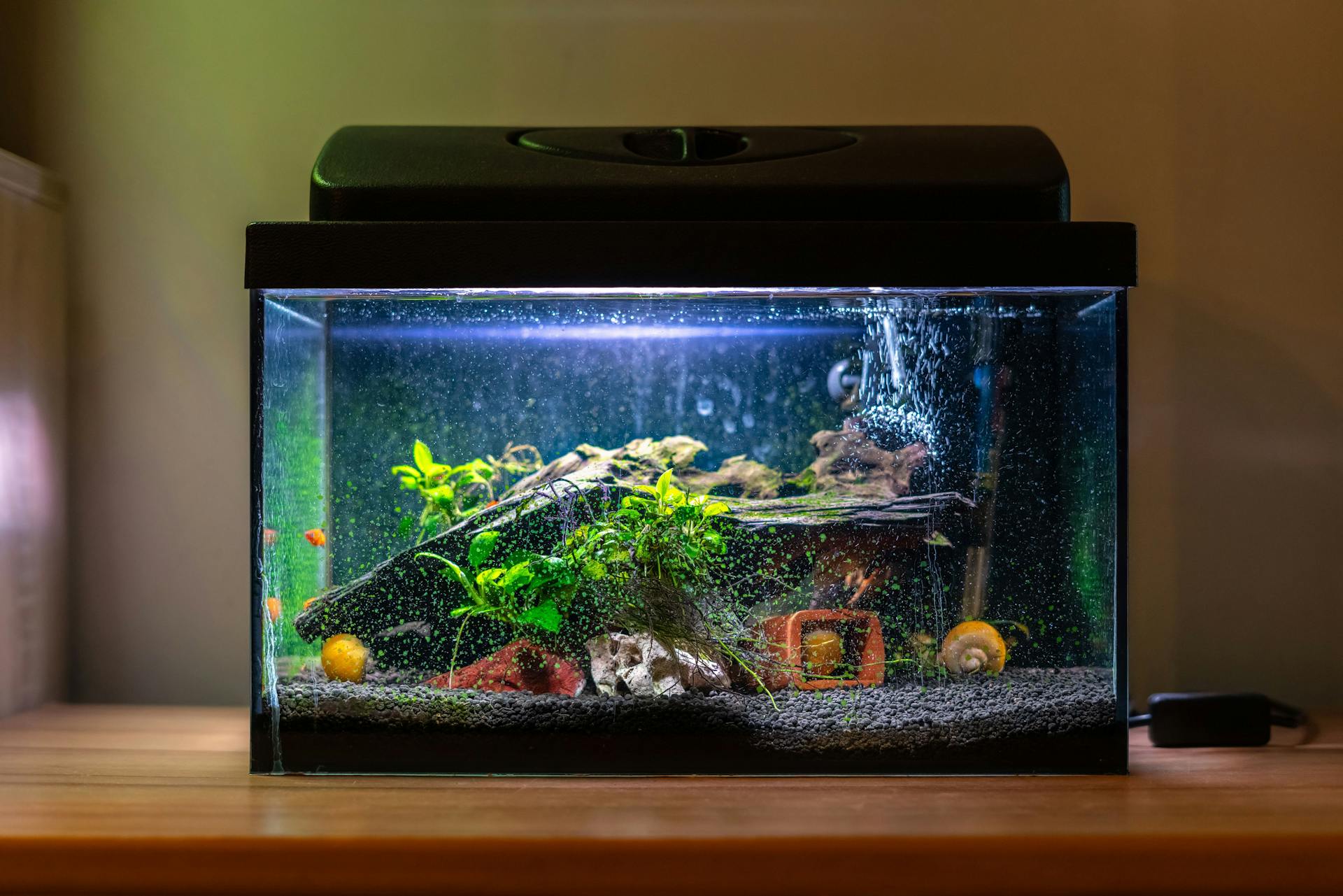
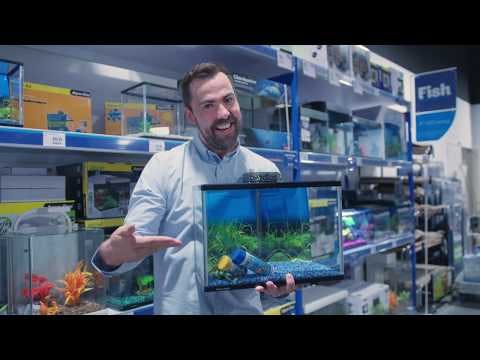
So, you’ve committed to the fish life. And now have a fish tank to set-up. To help establish a healthy environment for your new fish family member, we’ve got a quick video (above) and step-by-step guide on how to set up your fish tank. Plus, some key information surrounding your fish tank, the fish tank cycle (Nitrogen cycle) and must-have products. Let’s get started.
Fish tank fast facts
- Cloudiness of the tank in the first few weeks is fine; it will fade with time. It occurs when the ammonia spikes, which is part of the normal tank cycling process.
- Wait for your tank to cycle over a couple of weeks before adding fish. But, if you do want to add your fish immediately, you must follow a specific process
- Always ensure you keep your tank water at a consistent temperature; a two-degree fluctuation can cause stress to the fish. We recommended a tank heater for both tropical and cold-water fish. The ideal temperature for tropical fish ranges between 22-27 Celsius while cold water fish like it below 22 Celsius.
Step-by-step fish tank set up
Now, let's set up your fish tank.
-
Remove tank/aquarium from the box
Carefully remove your tank from its box and place in a safe spot. Build your stand (if needed) at this point. While you’re able to get to the back of aquarium easily, add your aquarium background if you have purchased one. If your tank comes with a light, ensure that it is working by plugging in and turning on. You may also want to wipe down the inside of the tank with a damp cloth (free of any chemicals or soaps) to ensure there is no dust. -
Put your tank /aquarium in position
Once you have built your stand and added your background, place your tank in its designated area. Doing this now will be much easier and safer than when it is full of water and very heavy.
Tip
Consider the positioning of your tank. Near windows, heaters and air conditioning units can cause issues from the extra lighting, cool and warm breezes. Remember even small amounts of change in temperature up or down can stress the fish.Consider the positioning of your tank. Near windows, heaters and air conditioning units can cause issues from the extra lighting, cool and warm breezes. Remember even small amounts of change in temperature up or down can stress the fish.
- Rinse all gravel and ornaments
With some hot water (free of any chemicals or soaps), thoroughly rinse your gravel and any ornaments you have purchased. This will ensure they are free of dust and any paint. Place them in the tank by adding the gravel slowly and carefully, to ensure it doesn’t hit the bottom of the tank too hard and cause damage.
Tip
Rinse your gravel with a strainer to make the process much easier!
- Fill your tank
Fill your tank with tap water. You may want to use a hose if possible. Begin filling the tank slowly to avoid any cloudiness from your gravel.
Tip
Place a small plate in the bottom of your tank and slowly pour the water into the tank over the plate, to minimise cloudiness.
-
Turn on filter (and heater if applicable)
Now is the time to turn on all electrical equipment associated with your tank (do NOT do this beforehand as this will damage your electrical equipment). The light can stay off for now if you would prefer. As a general rule, only leave your light on for up to eight hours per day, as any longer may promote algae growth. -
Add in treatments
Read all instructions on your treatment bottles to ensure you are adding the right dosage to your tank. Add in all treatments now. Water conditioner and a biofilter product to establish beneficial bacteria are a must. -
Let the tank cycle
Allow your tank to cycle and create a healthy biological filter before adding in any fish. This may take up to one month. To begin the cycle, add a good pinch of fish food to the water; this will break down into ammonia and products promoting bacteria will start to act.
By letting a healthy environment develop, you will decrease the chance of your tank suffering from New Tank Syndrome which is a toxic buildup of ammonia and nitrites.
After all required products have been added and the cycling is complete (after following product instructions), you should take the opportunity to bring a sample of your tank water (about 100ml, in a clean container with lid) into your local PETstock store for free water testing. A PETstock team member can ensure your water’s pH, GH, ammonia and other levels are optimal before you add your fish. If these results are positive, it’s time to purchase some fishy family members (if you haven’t already)!
Tip
As the tank is still establishing, it’s recommended that you add a small amount of fish, to begin with, which allows the bacteria to continue to work effectively. Then, over a couple of weeks, gradually add more fish.
- Keep testing your water
Once you have added fish to your new tank, the added waste fish produce could cause some more ammonia to reappear. The beneficial bacteria will continue to consume ammonia, however, it’s important to keep an eye on this while the tank finishes establishing itself. Reacting to any necessary changes will help keep your fishy family members safe and healthy.
How the fish tank cycle works
The tank cycle itself follows one linear process, and the longer you wait to add fish during the cycle, the better. However, if you do want to add fish immediately, there are a couple of methods to do so.
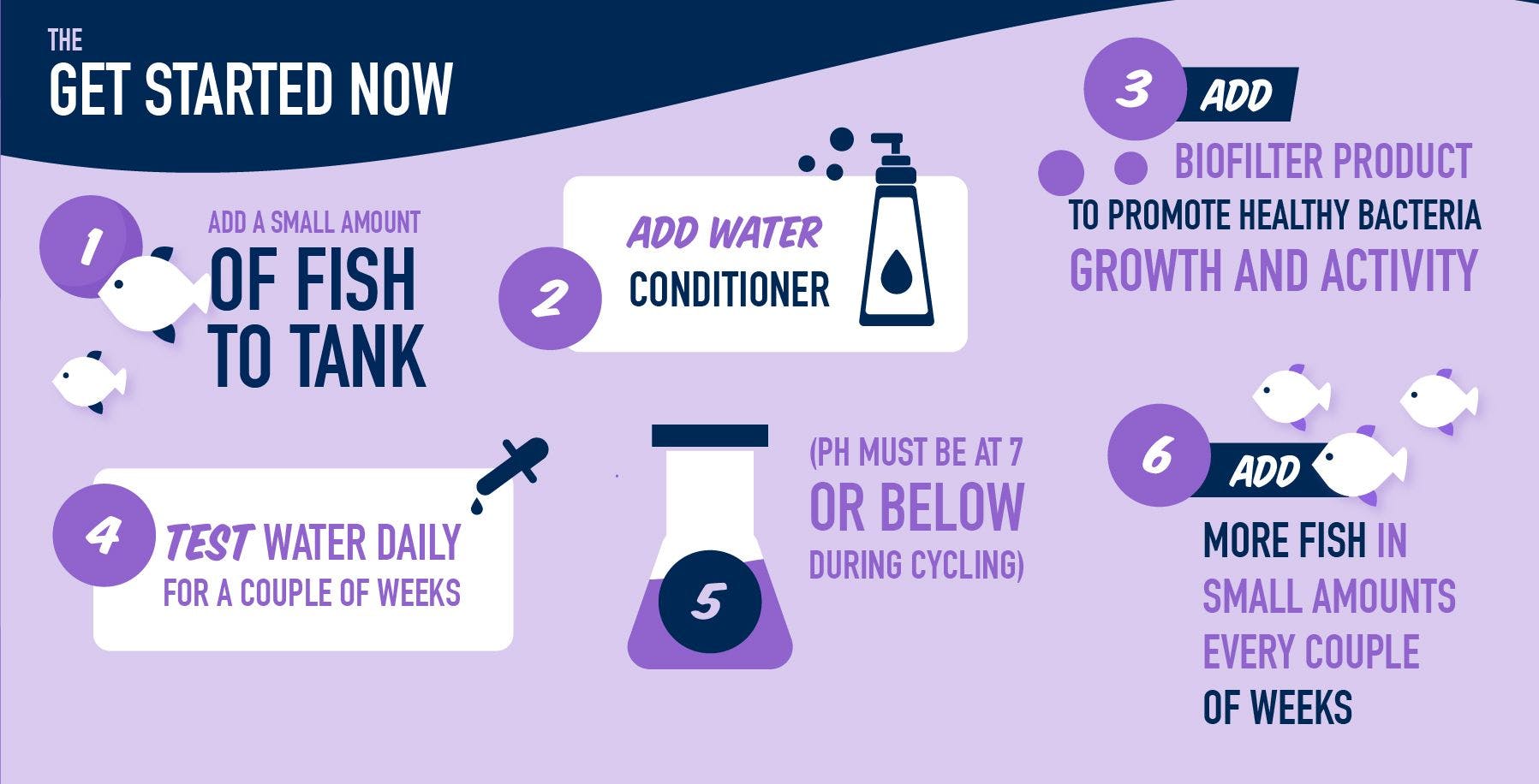
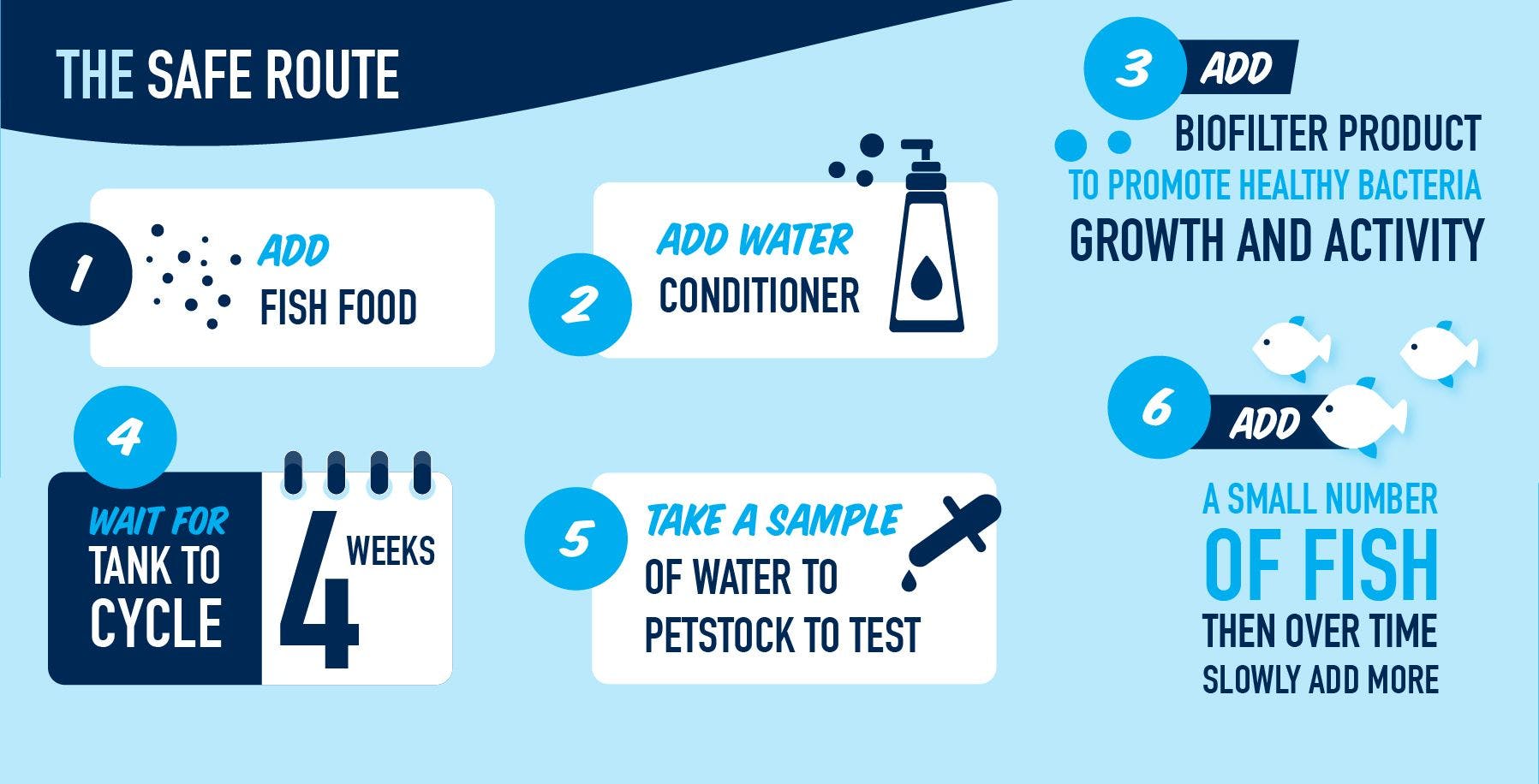
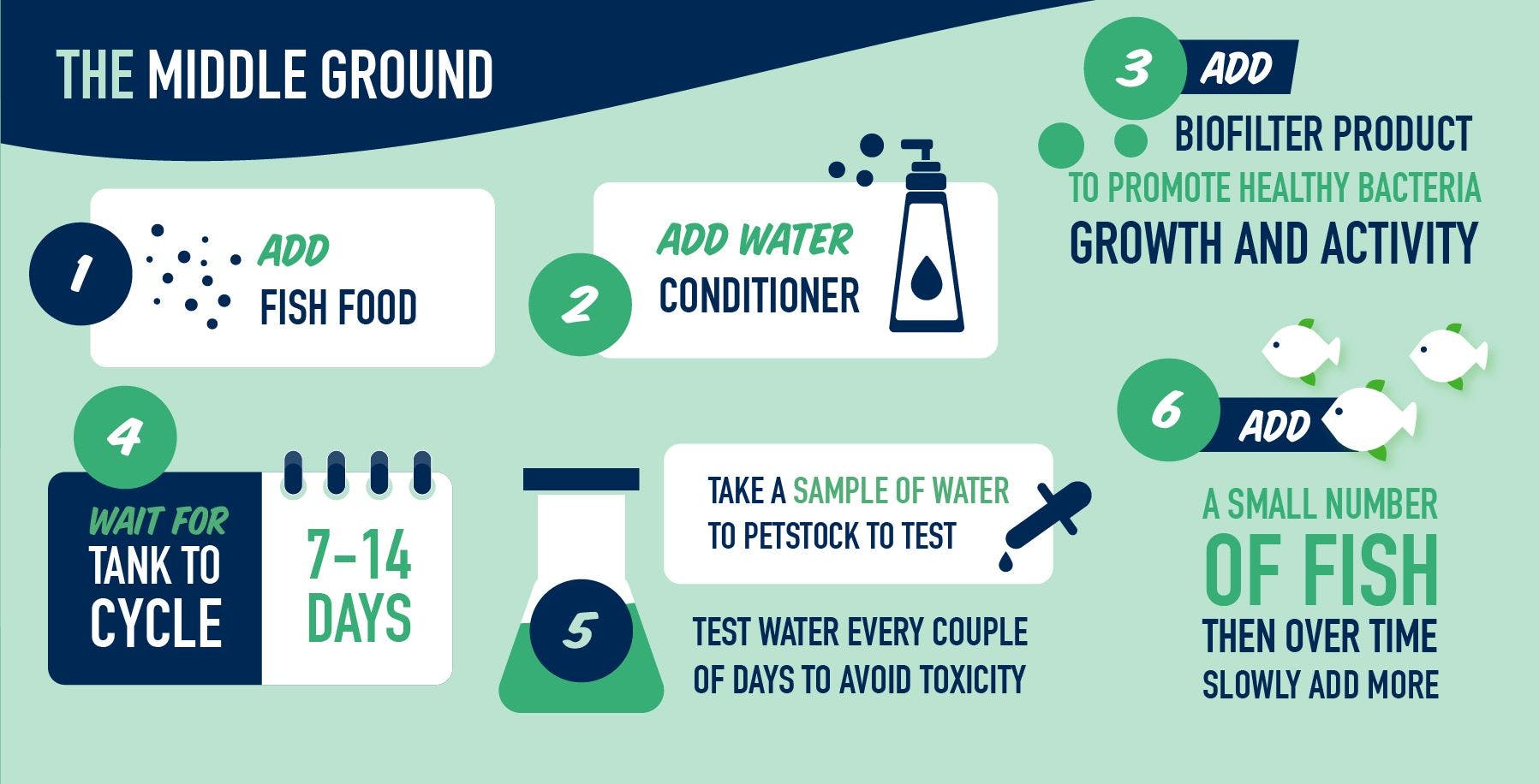
After the tank cycles and fish are added to the tank, you still need to monitor your fish, as well as maintain the tank.
The tank cycle itself follows one linear process, and the longer you wait to add fish during the cycle, the better. However, if you do want to add fish immediately, there are a couple of methods to do so.
Find out more on maintaining your fish tank.
Fish tanks to consider
Aqua One Focus Glass Aquarium Range - Available in three sizes. Modern stylish design that can be used for cold or tropical fish and includes lighting and filtration.
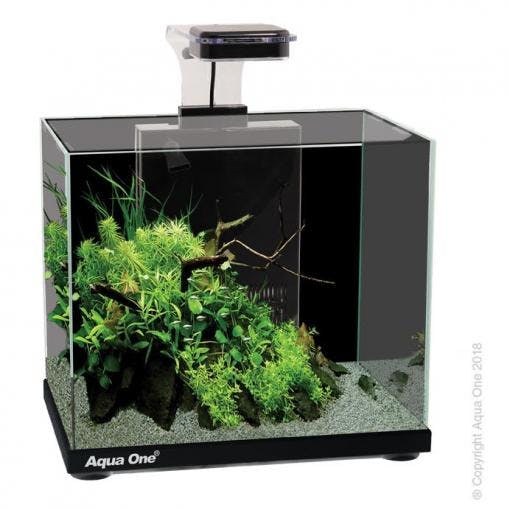
Aqua One Ecostyle Aquarium Range - Available in two sizes. Energy efficient LED lighting, tank can be used for cold or tropical fish.
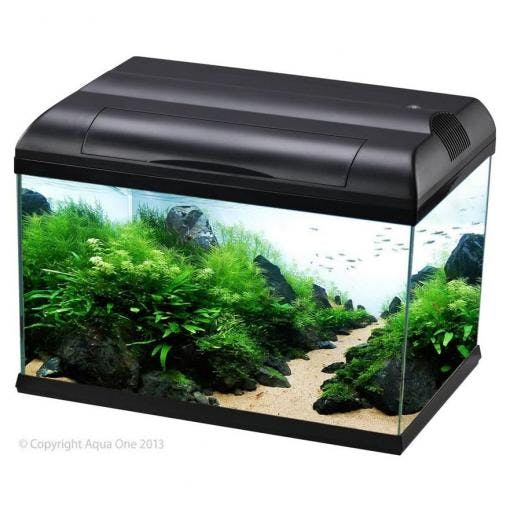
FAQs about fish tanks/aquariums
Why do I need to wait before I put fish in the tank? You need to cycle your tank before adding fish because the water needs to be at all the right levels (pH, GH, ammonia and other levels) to avoid toxicity to your fish.
What temperature should the water in my fish tank be? The ideal temperature for tropical fish ranges between 22-27 Celsius while cold water fish like it below 22 Celsius.
Is the set up of a fish tank different depending on the tank type? The steps and process is the same across all fish tanks.